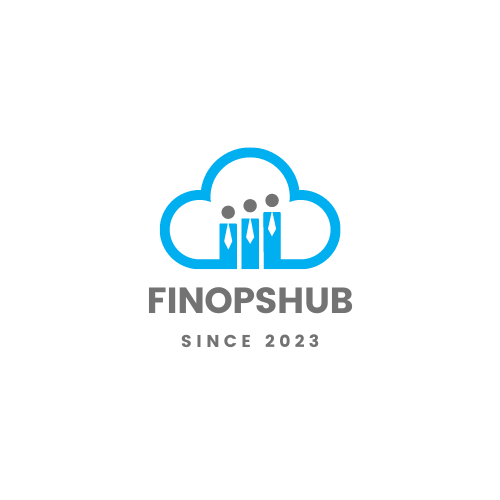A good grasp of the methods used to implement unit economics in cloud computing is crucial for optimizing costs and aligning financial strategies with operational goals. Here, we’ll explore the core concepts of cloud cost structure, cloud pricing strategies and implementation.
Steps to Implement Unit Economics in Cloud Computing
Unit economics in cloud computing provides a strategic methodology to manage and optimize cloud spending. Understanding and applying these principles can guide your organization towards more efficient use of resources and better financial outcomes.
1. Identify Measurement Metrics
The first step in implementing unit economics is identifying the right metrics to measure. These unit metrics help you determine the cost-effectiveness of your cloud operations by tracking costs and revenues on a per-unit basis.
- Cost per User: Measures the total cloud costs divided by the number of active users.
- Cost per Transaction: Tracks the cost associated with each transaction processed through your cloud services.
- Cost per Instance Hour: Measures the cost of running a virtual machine or instance for one hour.
| Metric | Calculation |
|---|---|
| Cost per User | Total Cloud Costs / Number of Active Users |
| Cost per Transaction | Total Cloud Costs / Number of Transactions |
| Cost per Instance Hour | Total Cloud Costs / Total Instance Hours |
These metrics serve as a foundation for understanding where your cloud spending is going and how efficiently your cloud resources are being utilized. By closely monitoring these numbers, you can make informed decisions about scaling, budgeting, and resource allocation.
For more detailed information on the principles of FinOps, visit our guide on finops principles.
2. Apply Financial Optimization Techniques
Once you have a clear understanding of your measurement metrics, the next step is to apply financial optimization techniques to manage costs effectively. Here are some key techniques to consider:
1. Rightsizing Cloud Resources:
- Regularly review and adjust your cloud resources to match your needs. Avoid over-provisioning, which can lead to unnecessary expenses (rightsizing cloud resources).
- Use tools and platforms that provide insights into resource utilization to make informed decisions.
2. Reserved Instances:
- Opt for reserved instances where possible to save on long-term cloud costs compared to on-demand pricing.
- Analyze your workload patterns to decide on the appropriate reservation terms.
3. Spot Instances and Preemptible VMs:
- Utilize spot instances or preemptible VMs for workloads that can tolerate interruptions (spot instances and preemptible vms).
- This can lead to significant cost savings as these instances are priced lower than regular on-demand instances.
4. Cloud Cost Management Platforms:
- Implement cloud cost management platforms that offer visibility and control over your cloud spending.
- These platforms provide features such as cost allocation, budgeting, and forecasting to help you stay on top of your cloud expenses.
5. Tagging Best Practices:
- Adopt multi-cloud tagging best practices to track and manage your resources effectively.
- Proper tagging enables better reporting, cost allocation, and accountability within your organization.
6. Eliminate Cloud Waste:
- Continuously monitor for and eliminate unused or underutilized resources.
- Implement automation where possible to identify and shut down idle resources.
These financial optimization techniques will go a long way to improve your unit economics and achieve greater efficiency in your cloud spending. For additional strategies to reduce costs, explore our article on 10 cloud cost reduction strategies.
By the way, it is necessary to understand cloud cost structures and pricing strategies to make solid decisions. They are discussed below.
Cloud Cost Structure
It is no secret that the cost structure of cloud computing is fundamentally based on a PAYG (Pay-As-You-Go) model. This approach means you only pay for the cloud services that you actually use, eliminating indirect expenditures such as software licenses and support fees.
This payment structure provides economic convenience, particularly for small to medium enterprises, as it allows them to minimize infrastructure costs and focus on core development activities.
| Cost Category | Description |
|---|---|
| Compute Costs | Charges for CPU usage, often billed per hour or second. |
| Storage Costs | Fees for data storage, typically billed per GB/month. |
| Networking Costs | Costs related to data transfer and bandwidth usage. |
| Support and Maintenance | Optional fees for premium support services. |
| Additional Services | Charges for using advanced services like AI and analytics. |
Fortunately, adopting a cloud-based infrastructure can lead to significant cost reductions and operational efficiencies. To understand the nuances of these cost structures in greater detail, you can refer to our article on cloud budgeting and forecasting.
Cloud Pricing Strategies
The pricing strategies deployed by cloud service providers are designed to accommodate different usage patterns and needs, making it easier for businesses to manage their expenses.
| Pricing Strategy | Description |
|---|---|
| On-Demand Pricing | Pay a fixed rate based on actual usage, no upfront commitments. |
| Reserved Instances | Commit to using specific resources for a longer period at a discounted rate. |
| Spot Instances | Purchase unused capacity at reduced prices, suitable for interruptible workloads (details). |
| Volume Discounts | Reduced rates for higher usage levels, encouraging bulk consumption. |
| Chargeback and Show-back Models | Allocate costs to respective departments/projects to drive cost-conscious behavior. |
| Hybrid Pricing | Combines on-premises infrastructure with cloud services, optimizing total spend. |
Implementing the appropriate pricing strategy depends on your organizational needs and usage patterns. What matters here is the right strategy, you can effectively reduce costs and ensure that your cloud spend aligns with your business priorities.
For more insights into cloud cost management and optimization, visit our discussion on 10 cloud cost reduction strategies and best practices for rightsizing cloud resources.
When a team have these foundational elements of cloud economics, they can make informed decisions that enhance organization’s financial performance and operational efficiency in the cloud environment.
I think optimizing unit economics in cloud computing can be a game-changer for your organization, allowing you to achieve financial excellence while ensuring that your cloud resources are used effectively.





